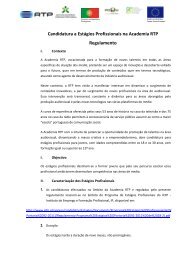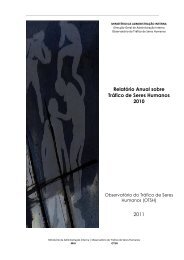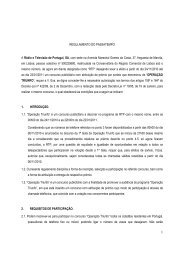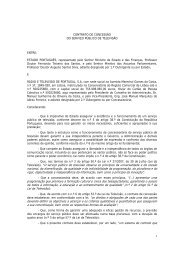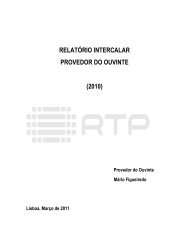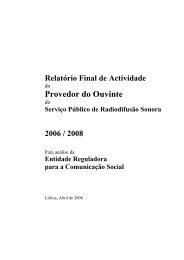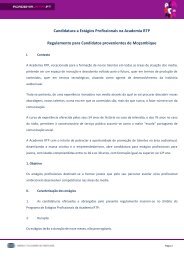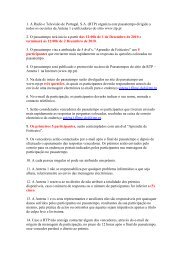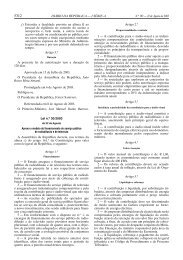eturn to <strong>the</strong> link here with aircraft overflight rights.During <strong>the</strong> latter part of <strong>the</strong> <strong>Cold</strong> <strong>War</strong>, <strong>the</strong> U.S. utilized some overseas basesfor its Airborne <strong>War</strong>ning and Control Systems (AWACS), a battle managementaircraft often used for coercive diplomacy as a modern form of “gunboat diplomacy.”Earlier in <strong>the</strong> <strong>Cold</strong> <strong>War</strong>, indeed, it had deployed overseas o<strong>the</strong>r electronicwarfare aircraft (ECM and ECCM), for instance, RC-135 CONVENT/ELINT aircraft for monitoring radars and telemetry had been based at RAFMildenhall, Hellenikon in Greece and Kadena in Okinawa. The EC-135, a modifiedKC-135 Stratotanker, was used as a radio and telemetry intercept aircraft,and four of <strong>the</strong>se “Silk Purse” planes were based at Mildenhall. In <strong>the</strong> latter partof <strong>the</strong> <strong>Cold</strong> <strong>War</strong>, USAF EF-111 Ravens were based in Spain and Turkey(Diyarbakir).The AWACS <strong>the</strong>mselves were home-based well back from potential lines ofconfrontation, so as to mitigate <strong>the</strong> chances of preemptive strike. Some werebased at Keflavik in Iceland in relation to <strong>the</strong> crucial G-I-UK Gap, o<strong>the</strong>rs atGeilenkirchen in Germany, and several in Japan. Also used as forward AWACSoperating bases were Trapani in Italy, Konya in Turkey and Oerland in Norway.A NATO command center at Maisieres in Belgium controlled NATO AWACSand British Nimrod early warning systems. Still o<strong>the</strong>r AWACS were sold toSaudi Arabia but operated <strong>the</strong>re with U.S. crews.Aircraft overflights13One of <strong>the</strong> less visible forms of foreign military presence, also one whichinvolves movable and transitory presences, is that of aircraft overflight privileges.It is a form of external access.This occasionally crucial matter of aircraft overflight privileges involves acomplex range of practices and traditions, some of which were, in an overall<strong>Bases</strong> <strong>during</strong> <strong>the</strong> <strong>Cold</strong> <strong>War</strong> 103İ 2007 Robert E. Harkavysense, altered by time in an era of increasingly “total” warfare, diplomacy andideological rivalries. In parallel with – and closely bound up with – what hasbeen wrought by nations’ increasing insistence upon extension of sovereigncontrol fur<strong>the</strong>r outward from coastlines (now more or less institutionalized by200-mile Exclusive Economic Zones – EEZs), <strong>the</strong> trend here <strong>during</strong> <strong>the</strong> <strong>Cold</strong><strong>War</strong> was towards tightened restrictions on overflights.In <strong>the</strong> past – and in some cases continuing to <strong>the</strong> present – some nations haveallowed o<strong>the</strong>rs more or less full, unhindered and continuous overflight rights(perhaps involving only pro forma short-term notices, i.e., filing of flight plans).In o<strong>the</strong>r cases, however, where political relations are weaker or not based onalliances, ad hoc, formal applications for permission to overfly must be madewell ahead of time, which may or may not be granted depending upon <strong>the</strong>purpose and situation, be it routine or crisis.It is to be stressed that <strong>the</strong> day-to-day diplomacy of overflight rights is a veryclosed and obscure matter, albeit of often crucial importance. We have little data– <strong>the</strong> subject periodically emerges to prominence <strong>during</strong> crises such as <strong>the</strong> 1986U.S. raid on Libya. Of course, it is precisely when urgent military operations areinvolved that <strong>the</strong> subject acquires <strong>the</strong> most importance.Nowadays, of course, well past <strong>the</strong> introduction of radar and its widespreadglobal distribution, few overflights can be made on a covert basis, as wascommon before World <strong>War</strong> II, when detection depended primarily on visualobservation from <strong>the</strong> ground. Not only “host nation” radar, but now also <strong>the</strong>superpowers’ satellite reconnaissance makes such “covert” activities almostimpossible, particularly if a small nation has access to information from one of<strong>the</strong> superpowers, be it on a regular or ad hoc basis. This in turn may have hadimportant ramifications for intra-Third World rivalries, specifically, regarding<strong>the</strong> balance of diplomatic leverage involved. Nations inclined, for instance, toprovide overflight rights in connection with a U.S. airlift to Israel knew thatSoviet satellite reconnaissance would provide information about that to Arabgovernments. That was a powerful deterrent.Some overflights were made without permission (as with <strong>the</strong> respective useby <strong>the</strong> United States and <strong>the</strong> USSR of U-2 and MiG-25 reconnaissance flights),overtly or with a tacit or resigned wink by <strong>the</strong> overflown nation. Often a nationwhose airspace is violated will not openly complain for fear of international ordomestic embarrassment over its impotence, or untoward diplomatic repercussionswith a strong power. Hence, <strong>the</strong> USSR is thought to have overflown Egyptand Sudan, among o<strong>the</strong>rs, without permission in supplying arms to EthiopiaPage 11
<strong>during</strong> <strong>the</strong> 1977–1978 Horn <strong>War</strong>, earlier, its MiG-25 and Tu-95 reconnaissanceaircraft apparently flew with impunity over Iran’s airspace. The United States isthought to have threatened overflights in some places for future arms resupply ofIsrael, if it should be utterly necessary.More recently <strong>during</strong> <strong>the</strong> Gulf <strong>War</strong>, and <strong>the</strong> Afghan and Iraq wars, thisbecame a big issue in numerous places. During <strong>the</strong> Gulf <strong>War</strong>, <strong>the</strong> U.S. and itsallies were allowed overhead access almost everywhere, including ex-<strong>War</strong>sawPact states in Eastern Europe. In <strong>the</strong> Afghan war, <strong>the</strong> U.S. had good overhead104 <strong>Bases</strong> <strong>during</strong> <strong>the</strong> <strong>Cold</strong> <strong>War</strong>İ 2007 Robert E. Harkavyaccess all over Europe, in <strong>the</strong> Caucasus and Central Asia and in and around <strong>the</strong>Persian Gulf excepting, of course, Iraq and Iran. Pakistan, politically crosspressured,allowed U.S. overflights by bombers coming from Diego Garcia andfrom aircraft carriers stationed in <strong>the</strong> Arabian Sea. During <strong>the</strong> Iraq war,however, <strong>the</strong> U.S. did have some problems with Switzerland, Syria and Iran.Nuclear-related bases14The utilization of overseas facilities in connection with <strong>the</strong> superpowers’ nuclearcompetition began immediately after <strong>the</strong> close of World <strong>War</strong> II. During <strong>the</strong> late1940s, prior to <strong>the</strong> Soviet Union’s development of a deployed nuclear militarycapability, <strong>the</strong> U.S. forward-based some nuclear-armed B-29 aircraft in <strong>the</strong> U.K.in an effort to deter feared Soviet advances in Europe. By 1950, B-29s werebased at Brize Norton, Upper Heyford, Mildenhall, Lakenheath, Fairford,Chelveston and Sculthorpe. There were also reserve B-29 bases at o<strong>the</strong>r Britishbases. There were related depots at Burtonwood and Alconbury, and also relatedLORAN navigational facilities at Angle, Pembrokeshire and in <strong>the</strong> Hebrides.That provided a clear first-strike deterrent capability for <strong>the</strong> U.S. well into <strong>the</strong>1950s.During <strong>the</strong> 1950s, <strong>the</strong> B-47 bombers became <strong>the</strong> backbone of SAC, and while<strong>the</strong>ir effective ranges were greatly extended by <strong>the</strong> aerial-refueling techniques<strong>the</strong>n emerging, <strong>the</strong> U.S. <strong>the</strong>n determined on forward deployment to enhance itschances for penetration and to lessen its vulnerability to a Soviet first-strike.This so-called “reflex force” rotated between U.S. home bases and those in <strong>the</strong>U.K. (Fairford, Upper Heyford), Morocco (Sidi Slimane, Benguerir, BenSlimane, Nouasseur), Spain (Torrejon, Zaragoza, Moron de la Frontera), Greenland(Thule) and Goose Bay, Labrador. (F-84 fighters used as bomber escortswere also based at Nouasseur until U.S. access to Morocco was lost in 1963.)Related U.S. tankers (<strong>the</strong>n mostly KC-97s) were based primarily at Thule,Greenland and Goose Bay, Labrador, and also at several o<strong>the</strong>r Canadian bases:Namao, Churchill, Harmon, <strong>Cold</strong> Lake and Frobischer. Though <strong>the</strong> subsequentlydeployed B-52s which began entering inventories in 1955 did notrequire forward main basing, <strong>the</strong>y too utilized trans-Arctic tanker facilities(including one at Sondestrom in Greenland) as well as contingency recoverybases in Spain and elsewhere.The Soviet Union did not utilize forward strategic-bomber facilities <strong>during</strong>this period. Indeed, early Soviet bombers, such as <strong>the</strong> 4500-km range Tu-4,could only reach <strong>the</strong> U.S. Pacific northwest from Siberia and, even <strong>the</strong>n, by concedingseveral hours’ warning time because of U.S. radar coverage in Alaska.During this period, and for a long time <strong>the</strong>reafter, <strong>the</strong> U.S. also relied onforeign access for strategic defense, primarily in Canada, Greenland and Iceland– that involved <strong>the</strong> DEW Line, Mid-Canada and Pinetree Line strings of electroniclistening posts, all under <strong>the</strong> U.S. Air Defense Command, which workedclosely with SAC. In addition, some U.S. interceptor aircraft were deployed atCanadian bases such as Goose Bay, and at bases in Greenland and Iceland, for<strong>Bases</strong> <strong>during</strong> <strong>the</strong> <strong>Cold</strong> <strong>War</strong> 105İ 2007 Robert E. Harkavyperimeter early defense, well forward of <strong>the</strong> large-scale interceptor deploymentsaround major U.S. urban areas.By <strong>the</strong> late-1950s, Soviet missile developments had rendered somewhatobsolete <strong>the</strong> three-layered radar early-warning system across <strong>the</strong> CanadianArctic, which had been constructed to provide several hours’ warning of bomberattacks. To cope with <strong>the</strong> missile threat, <strong>the</strong> U.S. built, beginning around 1958,<strong>the</strong> Ballistic Missile Early <strong>War</strong>ning System (BMEWS), <strong>the</strong> three hinges ofPage 12Page 13
- Page 2 and 3: This provided the U.S. access to a
- Page 4 and 5: ecame a hot issue within Japan, and
- Page 6 and 7: SpainRotaMajor naval base; also air
- Page 10 and 11: which were in Fairbanks (Alaska), T
- Page 13: Molesworth), Belgium (Florennes), t
- Page 17 and 18: III,” 14 stations giving flexible
- Page 19 and 20: wire retaliation strike plan. The n
- Page 21 and 22: Ocean surface surveillance47The U.S
- Page 23 and 24: each site, providing variable cover
- Page 25 and 26: Pinetree LineCanadaBroughton Island
- Page 27 and 28: that is, the Limited Test Ban Treat
- Page 29 and 30: Missile Crisis.68At another level,
- Page 31 and 32: Access for Soviet surface ships.Per
- Page 33 and 34: nel in Libya, whose air force compr
- Page 35 and 36: systems (an exception, of course wa
- Page 37 and 38: Madagascar). There was also a signi
- Page 39 and 40: Aden, Bahrain, Malta, Mauritius, Si




